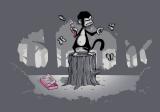By Mark Wald
Cold, Hard Football Facts
When the air turns crisp bettors’ thoughts turn to weather. More specifically, their thoughts turn to weather that might impact NFL games.
Do home teams have an advantage playing in adverse weather? Do extreme conditions impact things like scoring, rushing, or passing? Does it impact which teams win, lose, and cover the point-spread?
Yes it does. But weather extreme enough to impact a game is rare. So rare, in fact, that worrying about is akin to worrying about plane travel.
Sure, if your plane goes down, you’re toast. But the chance of it happening is slim to none.
Extreme weather defined
Cold weather is relative. What’s cold to you may not be cold to someone else. That’s why we’re eschewing terms like “bad weather” or “cold weather”, opting instead for “extreme” weather. Extreme weather is conditions outside the range of what is considered normal or comfortable.
It’s also not limited to freezing temperatures. Heat, humidity and heavy wind are overlooked but no less valid conditions that impact NFL games.
We tapped historical weather records, settling on four categories of extreme weather.
Freeze or Snow (temperature <=32 degrees OR snow, ice, or sleet present)
Cold being relative, we had to draw a line somewhere. The freezing point is as good a line as any. Games with snow, ice, or sleet (which can occur in temps higher than 32 degrees) are also included in this category.
Extreme Freeze or Snow (temperature <=15 degrees OR heavy snow OR wind chill <= (-10) degrees)
Chalk up this second cold weather category to author bias. Minus a heavy wind, 20 or 30 degrees isn’t that cold, so we created a second tier, a tier more commonly known as “REALLY cold weather, dude.”
Extreme Heat & Humidity (temperature >=80 degrees AND humidity >=70%)
80 degrees isn’t all that hot. Add 70 percent humidity and it’s miserable. In fact, these conditions occur so rarely together in the months NFL games are played that its happened only 151 times since 1933 (full disclosure: we have humidity levels for 93 percent of outdoor NFL games since the early 1930s).
Heavy Wind (wind >= 30 mph, steady or gust)
Quarterbacks say wind is harder to deal with than any other condition. Although wind is captured to a certain extent in the Extreme Freeze or Snow category, it warrants its own category independent from other conditions.
Impact on statistics
As a basis for comparison we kept it simple, settling on five statistics: scoring, pass attempts, pass yards, rush attempts, and rush yards.
Here are the NFL averages for those stats in the years from 1941-2010.
Per Game NFL Team Averages (1941-2010) Points 20.9
Pass Attempts 29.1
Pass Yards 183.1
Rush Attempts 31.7
Rush Yards 125.1
We compared these averages to the averages in extreme weather games.
NFL freeze or snow games (since 1941, 818 games) Category Freeze or Snow NFL Avg b/w
Points 19.6 20.9 -1.3
Pass Attempts 29.8 29.1 0.7
Pass Yards 177.3 183.1 -5.8
Rush Attempts 31.6 31.7 -0.1
Rush Yards 125.2 125.1 0.1
Observations:
Impact of freeze/snow is minimal.
Scoring is down about a point.
Passing is down about 6 yards.
NFL extreme freeze or snow games (since 1941, 105 games) Category Extreme Freeze, Snow NFL Avg b/w
Points 18.1 20.9 -2.8
Pass Attempts 28.3 29.1 -0.8
Pass Yards 164.4 183.1 -18.7
Rush Attempts 32.3 31.7 0.6
Rush Yards 125 125.1 -0.1
Observations:
Extreme Freeze/Snow has a meaningful impact on scoring and passing yards.
Scoring is 3 points below average.
Passing yards is 19 yards below average.
NFL extreme heat and humidity (since 1941, 151 games) Category Extreme Heat, Humidity NFL Avg b/w
Points 18.6 20.9 -2.3
Pass Attempts 30.5 29.1 1.4
Pass Yards 189.2 183.1 6.1
Rush Attempts 28.9 31.7 -2.8
Rush Yards 114.2 125.1 -10.9
Observations:
Extreme Heat & Humidity has a meaningful impact on scoring and rushing.
Scoring is 2 points below average.
Teams run the ball less often with less success.
Heavy wind (since 1941, 169 games) Category Heavy Wind NFL Avg b/w
Points 17.3 20.9 -3.6
Pass Attempts 28.2 29.1 -0.9
Pass Yards 162.2 183.1 -20.9
Rush Attempts 32.5 31.7 0.8
Rush Yards 125.4 125.1 0.3
Observations:
Heavy wind has a significant impact on scoring and passing.
Scoring down almost 4 points
Pass attempts are about equal, but passing volume is down 21 yards.
Impact on wins, losses, ATS results
We’ve just seen how extreme weather impacts team performance. Does that impact carry over to wins, losses, and ATS results?
Good question. After all, if two teams react to weather conditions equally the end result is a wash.
There are two general assumptions about extreme weather and NFL games.
ONE – Home teams have an advantage because they’re used to playing in it.
TWO – Underdogs have an advantage in extreme weather because as team performance drops, scores tighten, increasing the likelihood the underdog will cover the spread.
Testing those assumptions, we compared the straight-up and ATS win percentages in extreme weather games to win percentages in games overall.
NFL win percent in freeze or snow (since 1941) Home Team PS Favorite
SU % ATS % SU % ATS %
Freeze or Snow gms 63% 53% 71% 50%
All Games 57% 48% 66% 48%
b/w 7% 5% 5% 2%
Observations:
Home teams win 7 percent more often than league average. ATS, their advantage is 5 percent better than average, but at 53 percent it’s barely over the profitability threshold.
Favorites win 5 percent more often straight-up, but only 2 percent more often ATS.
NFL win percent in extreme freeze or snow (since 1941) Home Team PS Favorite
SU % ATS % SU % ATS %
Extreme Freeze or Snow 68% 53% 68% 42%
All Games 57% 48% 66% 48%
b/w 11% 4% 1% -6%
Observations:
Hometeams have a big advantage straight-up, winning 68 percent of the time. Against the spread their advantage is less impressive.
No surprise, then, to findUnderdogs with a big advantage when playing in Extreme Freeze/Snow conditions. Underdogs typically cover the spread at a rate of 52 percent. Here, that number jumps to 58 percent.
NFL win percent in extreme heat & humidity (since 1941) Home Team PS Favorite
SU % ATS % SU % ATS %
Extreme Heat, Humidity 55% 45% 66% 43%
All Games 57% 48% 66% 48%
b/w -2% -3% -1% -5%
Observations
Hot, humid conditions favor visiting teams and underdogs.
Visiting teams win 2 percent more often straight-up and 3 percent more often ATS.
Underdogs cover the spread 5 percent more often.
Win percent in heavy wind (since 1941) Home Team PS Favorite
SU % ATS % SU % ATS %
Heavy Wind 56% 46% 68% 50%
All Games 56% 48% 66% 48%
b/w 0% -3% 1% 2%
Observations:
Home teams cover the spread 3 percent less often in heavy wind.
Favorites cover the spread 2 percent more often.
The variances are not significant and contradict each other somewhat, suggesting that heavy wind impacts both teams equally.
Extreme Weather - Final Conclusions
Impact on team statistics
Cold/snow doesn’t meaningfully impact team performance until it reaches extreme levels.
Hot, humid conditions impact scoring almost as much as extreme cold (-2.3 points vs. -2.8).
Passing is most impacted by extreme cold and heavy wind.
Rushing is most impacted by heat and humidity.
All extreme weather conditions impact scoring, but heavy wind impacts it more than any other.
Impact on wins, losses, and ATS results
In cold weather home teams have an advantage straight-up, but no meaningful ATS advantage.
In extremely cold weather underdogs have a big ATS advantage, covering at a rate of 58 percent.
Hot, humid conditions favor visiting teams. Why? No clue.
Hot, humid conditions also favor underdogs. They cover five percent more than average.
Heavy wind has the greatest impact on team performance but it seems to affect teams equally.
The facts are clear.Extreme weather impacts NFL games. But it so rarely occurs that it’s meaningless to the bettor.
This analysis covered more than 11,000 games. Freeze/Snow games (first tier) number a little more than 800. That’s a frequency rate of about 7 percent, and the ATS impact in these conditions is minimal.
Conditions that do impact ATS results, like extreme heat, cold, and heavy wind, comprise less than 2 percent of outdoor games played. That works to roughly two betting opportunities a year.
Tuck the information in your back pocket. If it’s clear that a game is going to be played in temperatures less than 15 degrees or -10 degree wind chill, give the underdog a hard look. Otherwise, your time and effort is better served refining other handicapping techniques.
The opportunities to capitalize on extreme weather conditions just aren’t there.






 Reply With Quote
Reply With Quote

